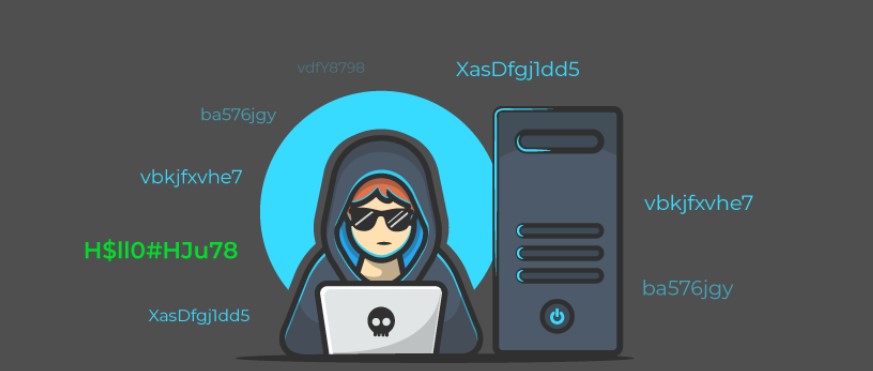Fortifying Your Defenses: Preventing and Defending Against Brute Force Attacks
February 2, 2024

In the realm of cybersecurity, one of the oldest and most common attack techniques is brute force attacks. These attacks involve systematically attempting various combinations of usernames and passwords to gain unauthorized access to systems or accounts. In this blog post, we will explore the intricacies of brute force attacks, their potential consequences, and practical measures you can take to protect yourself and your organization from falling victim to these relentless threats.
In this article Cocha will help you:
- Understand brute-force attacks
- Know the implications of brute-force attacks
- Recognize the signs of a brute-force attacks
- Learn how to prevent and mitigate brute-force attacks
Understanding Brute Force Attacks
Brute force attacks are characterized by their straightforward yet relentless nature. Attackers utilize automated tools that systematically try every possible combination of characters until the correct password is discovered. The success of these attacks relies heavily on weak or easily guessable passwords. Brute force attacks can be performed against various targets, including user accounts, network services, or even cryptographic keys.
The Implications of Brute Force Attacks
Brute force attacks can have severe repercussions for individuals and organizations alike. Here are some consequences to be aware of:
- Unauthorized access and data breaches: Successful brute force attacks grant cybercriminals unrestricted access to sensitive systems or user accounts, potentially leading to data breaches, financial loss, or privacy violations.
- Compromised user accounts: Brute force attacks can result in account takeovers, allowing attackers to impersonate users, conduct fraudulent activities, or gain unauthorized privileges.
- Damage to reputation: Organizations that fall victim to brute force attacks may suffer reputational damage, eroding customer trust and confidence in their security practices.
Recognizing Signs of Brute Force Attacks
While brute force attacks can be challenging to detect, there are certain indicators that can raise suspicions. By remaining vigilant and proactive, you can minimize the impact of such attacks. Look out for the following signs:
- High number of failed login attempts: Frequent failed login attempts, particularly from a single IP address, could indicate an ongoing brute force attack.
- Unusual patterns in login activity: Monitor for abnormal login patterns, such as multiple login attempts within a short time period or login attempts originating from different geographical locations.
- Unexpected system or account behavior: Be wary of sudden changes in system performance, account lockouts, or unfamiliar devices associated with user accounts.

Preventing and Mitigating Brute Force Attacks
Protecting yourself and your organization from brute force attacks requires a proactive approach and a multi-layered defense strategy. Consider the following preventive measures:
- Implement strong password policies: Educate users about the importance of using complex passwords that include a mix of uppercase and lowercase letters, numbers, and special characters. Encourage regular password updates and discourage password reuse.
- Enforce account lockouts and timeouts: Implement mechanisms that temporarily lock user accounts or introduce time delays after a certain number of failed login attempts. This slows down attackers and makes brute force attacks less feasible.
- Utilize multi-factor authentication (MFA): Enable MFA to add an extra layer of security. Require users to provide additional verification, such as a one-time password (OTP) or biometric authentication, in addition to their passwords.
- Employ rate limiting and CAPTCHA: Implement rate limiting measures to restrict the number of login attempts allowed within a specific timeframe. Additionally, consider using CAPTCHA or similar mechanisms to differentiate between human and automated login attempts.
- Network monitoring and intrusion detection: Utilize intrusion detection systems (IDS) and network monitoring tools to identify and block suspicious traffic patterns associated with brute force attacks.
- Regularly update and patch systems: Keep your systems, applications, and plugins up to date with the latest security patches. Vulnerabilities in outdated software can be exploited by attackers to facilitate brute force attacks.
Brute force attacks continue to be a persistent and widespread threat in the cybersecurity landscape. By understanding their nature, recognizing the signs of an attack, and implementing robust preventive measures, you can significantly reduce the risk of unauthorized access, data breaches, and reputational damage. Promote strong password practices, employ multi-factor authentication, and leverage network monitoring tools to fortify your defenses against brute force attacks. Stay vigilant, update your systems regularly, and remain proactive in safeguarding your digital assets and maintaining a secure online environment.
Have Any Question?
Call or email Cocha. We can help with your cybersecurity needs!
- (281) 607-0616
- info@cochatechnology.com




